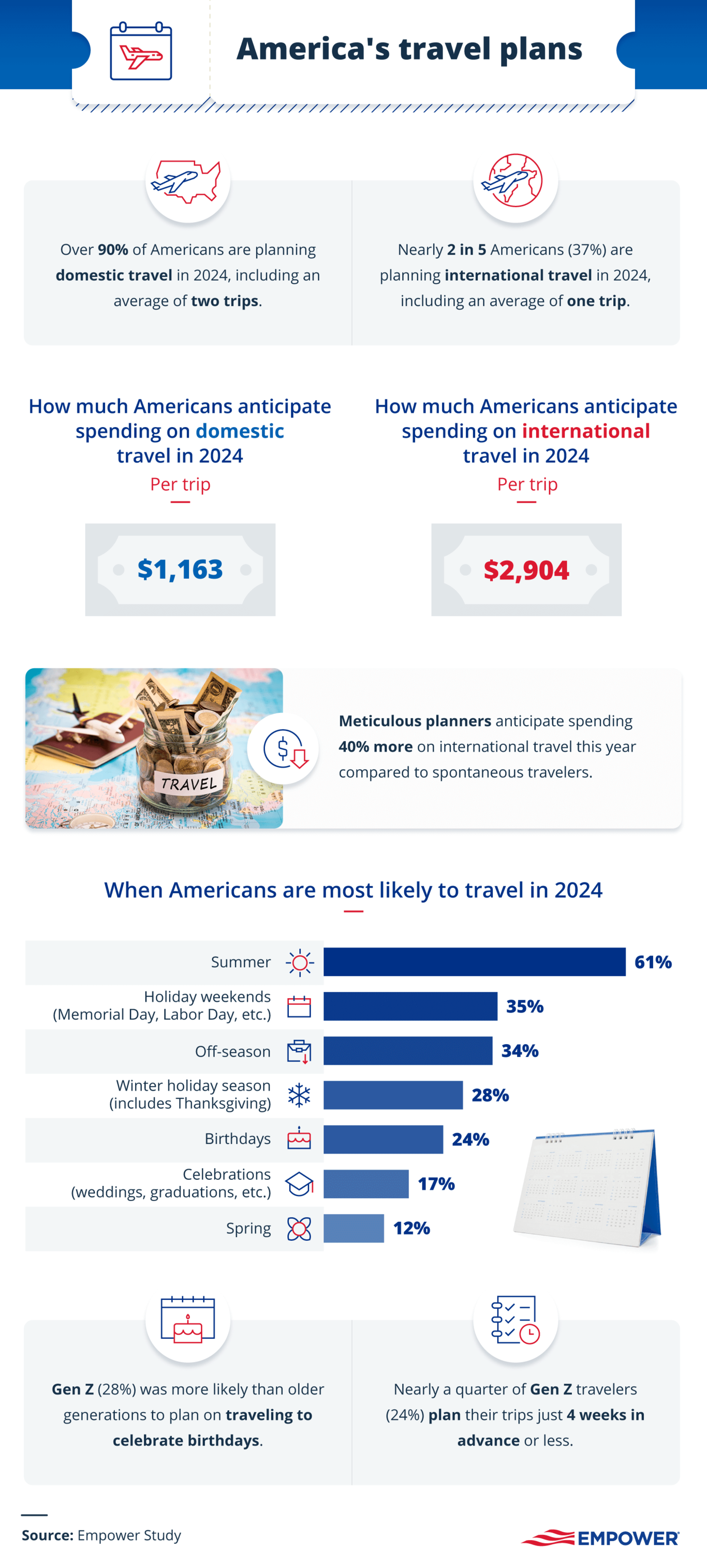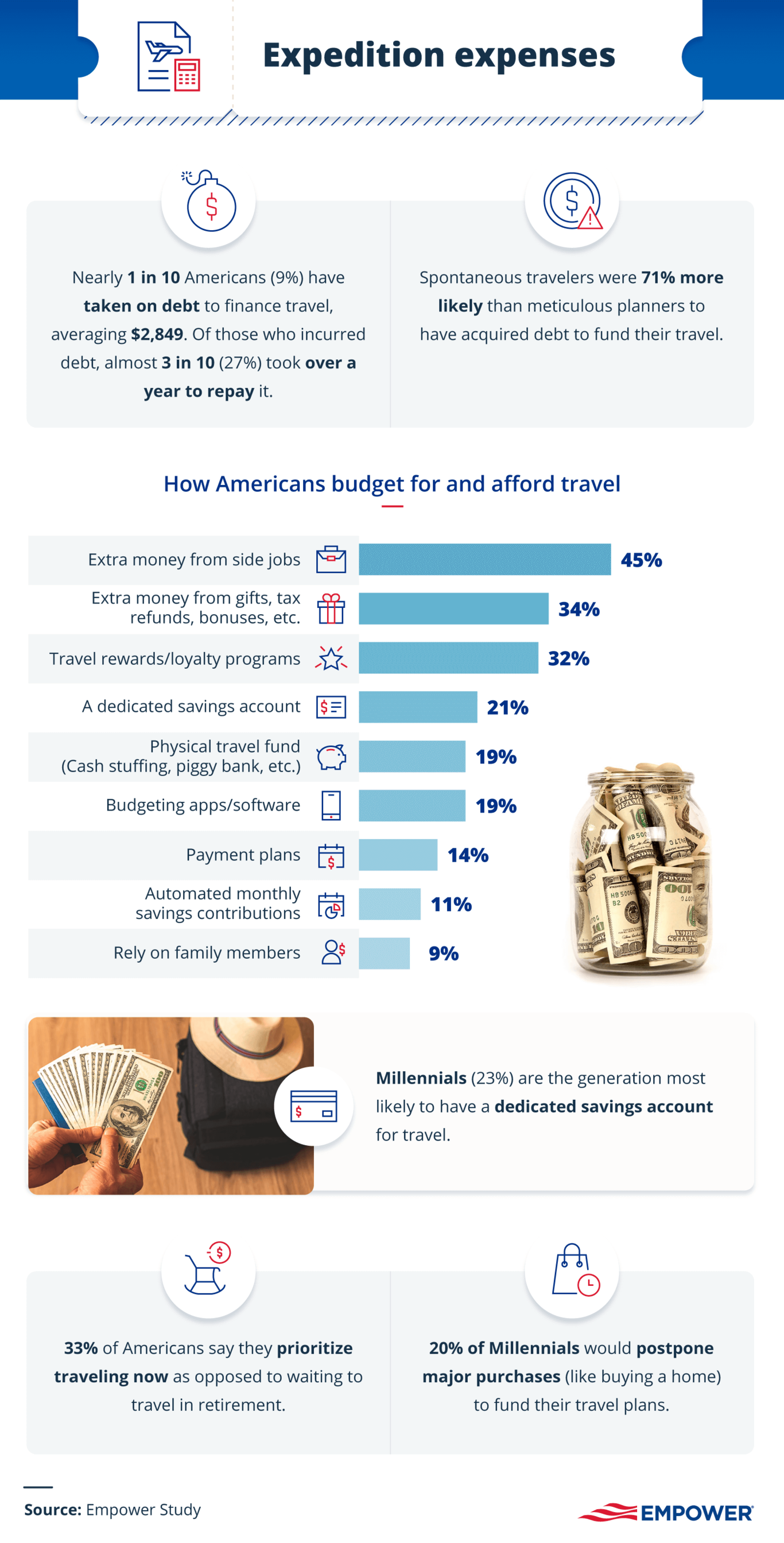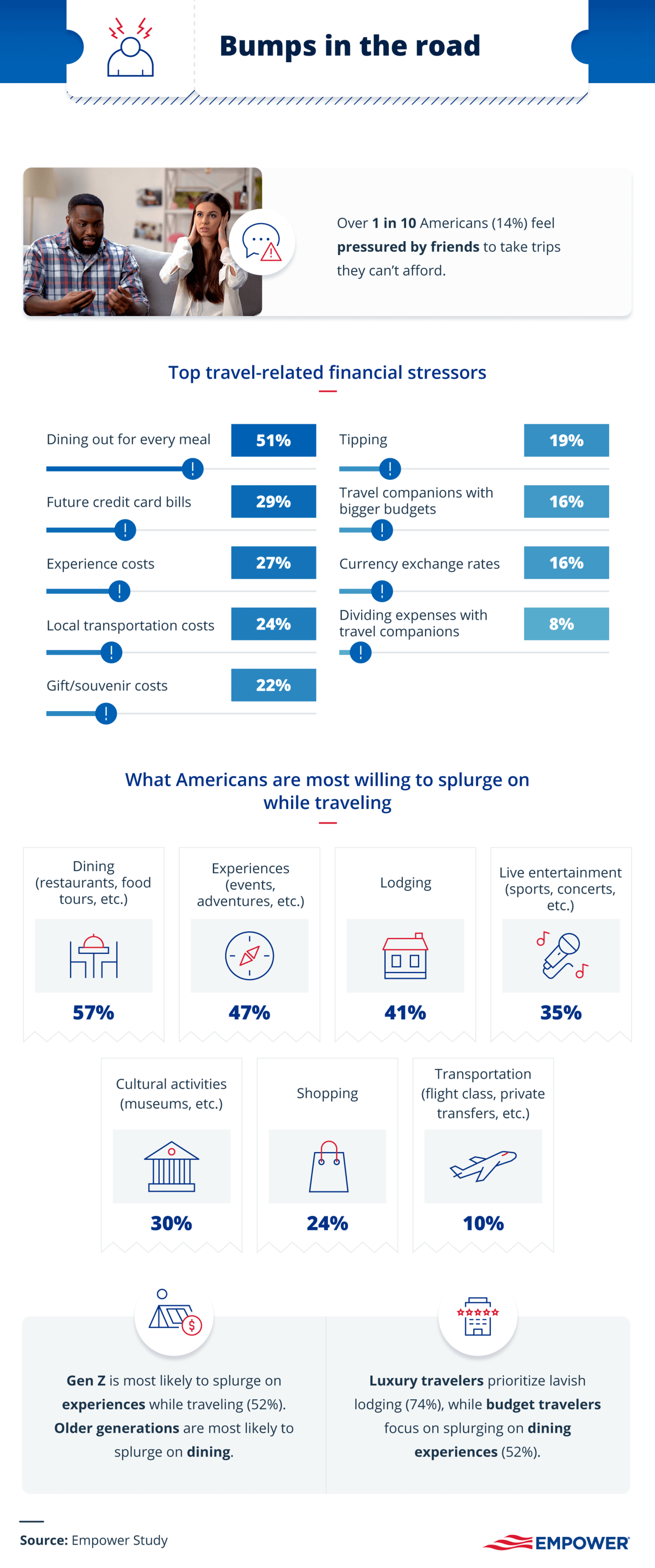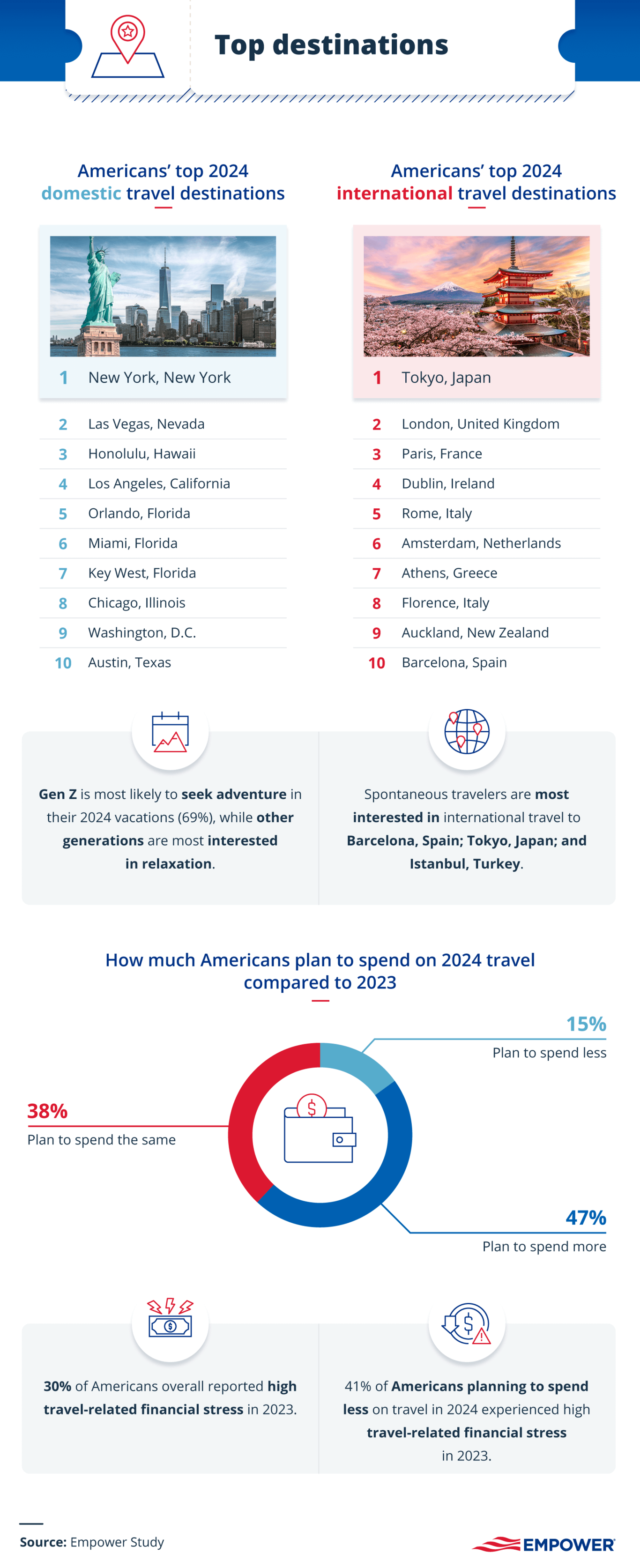Top travel destinations and spending habits
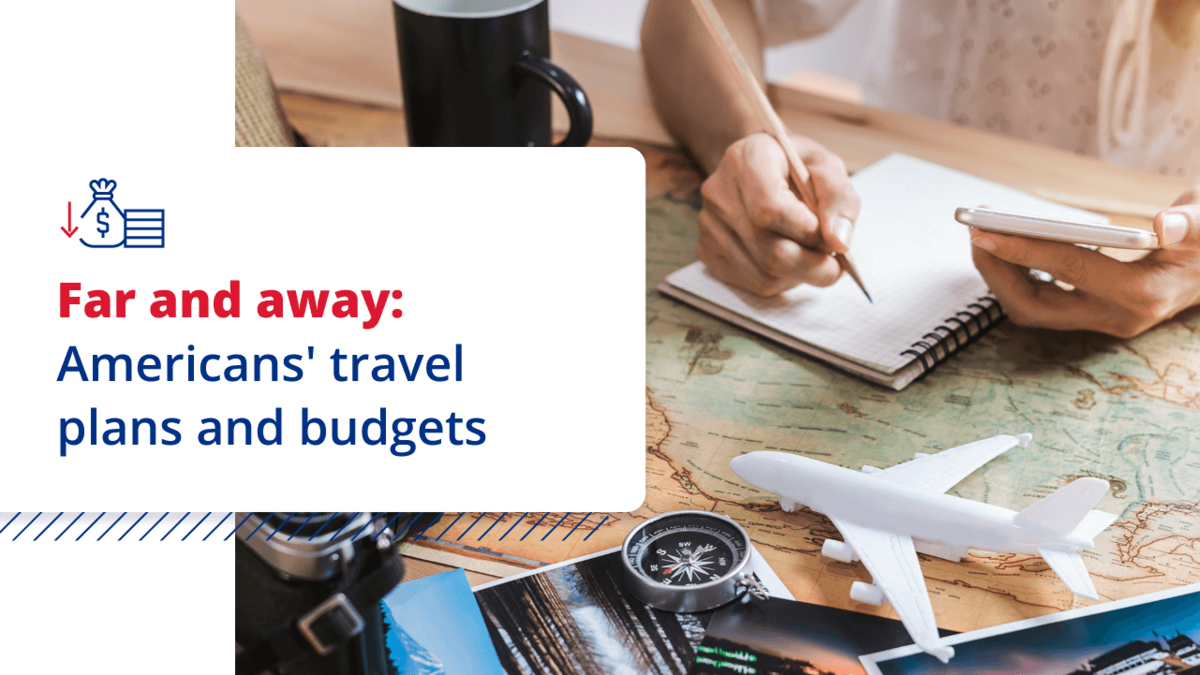
Americans are eager to pack their bags and explore: Over 90% are planning domestic travel this year, expecting to spend an average of $1,163 per trip. But how are they balancing their wanderlust with their wallets?
One in 5 Millennials are planning to postpone major purchases like buying a home to fund their travel plans. A third of Americans (33%) say they aren’t waiting for retirement to see the world – and are prioritizing travel now.
Key takeaways
Nearly half (47%) of Americans plan to spend more on travel this year compared to 2023.
Summer is the season of choice for 61% of travelers, with 35% of Americans planning trips during the holiday weekends (Memorial Day, Labor Day, etc.) and 34% opting for the off-season.
Over half of Baby Boomers (52%) prefer budget-friendly travel options compared to younger generations.
45% of those surveyed finance their travel with extra money earned from side jobs, while 34% use their tax refunds or bonuses, and 32% use travel rewards and loyalty programs.
Nearly 1 in 10 Americans (9%) have taken on debt to finance travel, averaging $2,849.
A quarter of Gen Zers (24%) feel pressured by friends to take trips they can’t afford.
Peak season or off-season?
With high inflation and sky-high prices, nearly half of Americans (47%) anticipate spending more this year on travel than last, but it’s not stopping them from prioritizing taking trips.
Jetsetters are packing their bags for at least two domestic trips this year. Nearly 2 in 5 are taking to the skies for international travel (37%) at an average cost of $2,904 per trip. The most popular times of year for Americans to travel are summer (61%), followed by holiday weekends like Memorial Day and Labor Day (35%). To help offset inflation, a third are opting for off-season travel, when prices are typically lower (34%).
Over half of Baby Boomers (52%) prefer budget-friendly travel options, compared to younger generations. Americans are most likely to plan their trips 3 to 6 months in advance (35%), but nearly 1 in 5 (17%) are more spontaneous, planning theirs just 4 weeks or less from departure. Waiting until the last minute to book a trip may have some benefits: Meticulous travelers anticipate spending 40% more on international trips than spontaneous travelers.
Smooth sailing vs. travel stressors
Spontaneous travelers are 71% more likely than meticulous planners to go into debt to pay for travel. Overall, nearly 1 in 10 Americans (9%) have taken on debt to finance their trips, at an average amount of $2,849. Of these, 27% needed over a year to pay down their debt.
Close to half of those surveyed (45%) finance their travel with extra money earned from side jobs, while 34% use their tax refunds or bonuses and 32% use travel rewards or loyalty programs. More than 1 in 5 have a dedicated savings account for travel (21%), and Millennials are the most likely generation to do so (23%).
More than two-thirds of Gen Xers (73%) and Millennials (69%) have cut back on dining out to save for their trips, as well as 61% of Gen Z and Baby Boomers. One in 5 Millennials (and 17% Gen Z) are planning to postpone major purchases like buying a home to fund their travel plans, and Americans overall are cutting back on their personal savings contributions (19%).
Peer pressure and financial stressors impact some Americans’ travel experiences: a quarter of Gen Zers (24%) feel pressured by friends to take trips they can’t afford. The top financial stressors while on vacation include:
Eating out for every meal (51%)
Thinking about their credit card bill upon returning home (29%)
Paying for experiences like special events and adventures (27%)
Local transportation costs (24%)
When it comes to splurging, Americans are most likely to indulge in dining (57%), experiences (47%), and lodging (41%). However, Gen Z is most likely to splurge on experiences while traveling (52%), while all other generations prioritize dining.
Travel style also plays a role in spending priorities, with people used to luxurious options being most likely to spend big on lavish lodging (74%) and budget-minded travelers splurging most on dining experiences (52%).
The wanderlust wishlist
Americans have their sights set on various domestic and international destinations in the year ahead. For domestic travelers, New York City, Las Vegas, and Honolulu top the list. Internationally, Tokyo, London, and Paris are the most desired locations overall and among our respondents who specifically identified as meticulous planners. Nearly 3 in 10 Gen Zers (29%) are also the most interested in traveling to Tokyo.
As Americans plan ahead, these are the top five priorities travelers are keeping in mind when planning a trip or picking a destination:
Relaxation (57%)
Family time (51%)
Adventure (47%)
Spending time enjoying nature/wildlife (36%)
Culinary experiences (30%)
Gen Z is the generation most likely to seek adventure in their travels (69%), while Baby Boomers are more likely to prioritize relaxation (61%).
On the move
Against a challenging economic backdrop, Americans are prioritizing travel and exploration, adjusting their budgets and splurging on the experiences that matter most.
Methodology
Empower commissioned a survey of 1,014 Americans to explore how they plan and pay for their travels. This survey was fielded from March 14-18, 2024.
About Empower
Empower, a leader in financial planning, investing, and advice, is dedicated to creating financial freedom through people and technology. Connect with us on Empower.com and subscribe to The Currency™ for the latest money news and views shaping how we live, work and play.
Fair use statement
You’re welcome to share our findings for any non-commercial purpose, but please include a link back to this page to provide access to our full study and methodology.
Get financially happy
Put your money to work for life and play
RO3501322-0424
The content contained in this blog post is intended for general informational purposes only and is not meant to constitute legal, tax, accounting or investment advice. You should consult a qualified legal or tax professional regarding your specific situation. No part of this blog, nor the links contained therein is a solicitation or offer to sell securities. Compensation for freelance contributions not to exceed $1,250. Third-party data is obtained from sources believed to be reliable; however, Empower cannot guarantee the accuracy, timeliness, completeness or fitness of this data for any particular purpose. Third-party links are provided solely as a convenience and do not imply an affiliation, endorsement or approval by Empower of the contents on such third-party websites. This article is based on current events, research, and developments at the time of publication, which may change over time.
Certain sections of this blog may contain forward-looking statements that are based on our reasonable expectations, estimates, projections and assumptions. Past performance is not a guarantee of future return, nor is it indicative of future performance. Investing involves risk. The value of your investment will fluctuate and you may lose money.
Certified Financial Planner Board of Standards Inc. (CFP Board) owns the certification marks CFP®, CERTIFIED FINANCIAL PLANNER™, CFP® (with plaque design), and CFP® (with flame design) in the U.S., which it authorizes use of by individuals who successfully complete CFP Board's initial and ongoing certification requirements.


